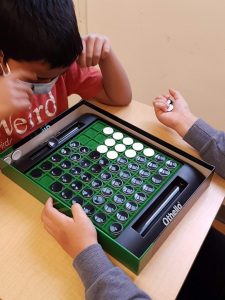Form Follows Function, SOLO PowerPoint/Speaking Project!
Time for a project!
In class, we have been talking a lot about FORM FOLLOWS FUNCTION in connection with our unit concept of STRUCTURE.
We also practiced thinking about form follows function, creating a basic PowerPoint, and doing research online, as we discussed the adaptations and form of our pet gerbils.
Now, you get to do your own SOLO project on a topic of choice. Here are the steps:
- Choose a topic and get it approved. You need to choose an animal, organism, part of an organism, building, or object, where you can look closely at how form follows function.
- Create a Form Follows Function PowerPoint Notes section in your journal’s table of contents, and set aside at least 6 pages (3 pages front and back) in your journal for notes as you do research on your topic.
- On each page, create a T-chart. On the left side, put the question you are researching (see the questions below). On the right, put notes in your own words from what you read online or in books, don’t just copy what you read.
- Each time you record notes, also record where the information came from. If using a website, put the website name, article name, and date of the article. If you are using a book, record the book title, copyright date, and author. This is to begin thinking about creating a bibliography.
- Remember to use websites whose addresses end in .edu (education), .gov (government), .net or .org (non-profit), more than other websites. Avoid .com or .ca or any website with lots of ads and pop-up screens. Avoid personal blogs and entertainment sites. If you need help, ask Ms. D.
- Answer the questions below. Each question needs at least one slide.
- On each slide, only use brief (short) bullet points that tell us the main ideas you want us to remember.
- Include a picture on each slide, too, that helps us understand the main ideas of your presentation. Please do not use emojis or clip art symbols.
- Create a script for your slides with more writing, as that is what you will share with us when you present. The writing in your script is different than the writing on the slide.
- Your presentation to the class can’t be longer than 5 minutes. Practice first, in front of your stuffies, a mirror, siblings, parents, or friends. Then, present to us in class using the projector.
What slides do you need to include?
- Title Slide with your name and the date.
- A slide explaining what your topic is, where the object/animal can be found, and why it is interesting to investigate.
- Slide one explaining the form of your object/animal.
- Slide two explaining the form of your object/animal.
- Slide one explaining how the form helps with the function of the object/animal.
- Slide two explaining how the form helps with the function of the object/animal.
- A slide with additional interesting information about your object/animal.
- A slide summarizing some of the key points from your presentation that you want us to really remember, as we might not remember everything you said. What is the most important?
- A slide showing the resources you used for your research in a short list.
- A slide ending the presentation that says “Any questions?”
Criteria:
I can:
- Show a complete understanding of how form follows function by explaining the specifics of how the form of an object/animal helps it with its function.
- Create a basic PowerPoint that is 5 minutes long and has at least 10 slides.
- Create slides with basic text, pictures, and readable fonts. I do not put my entire script on the slides, but only key points that are different from my script.
- Record notes in my journal using a T-Chart and recording my resources where I found information.
- Create a list of the resources as a mini bibliography for my presentation.
- Write a script to share my ideas, practice saying it aloud with others, and then present it to the class using appropriate volume, enunciation, pace, posture, and expression so the audience hears my ideas.
- Be a THINKER by showing evidence of questions and making connections between form and function concepts.
- Be a SELF MANAGER by using my time well in class without frequent teacher reminders to stay on task. I finish on time and am ready to present when asked.
Due Date: October 28th, Friday. A rubric will be provided for you with the criteria above, so you can do a self-reflection on how you did, and receive feedback from Ms. D.

